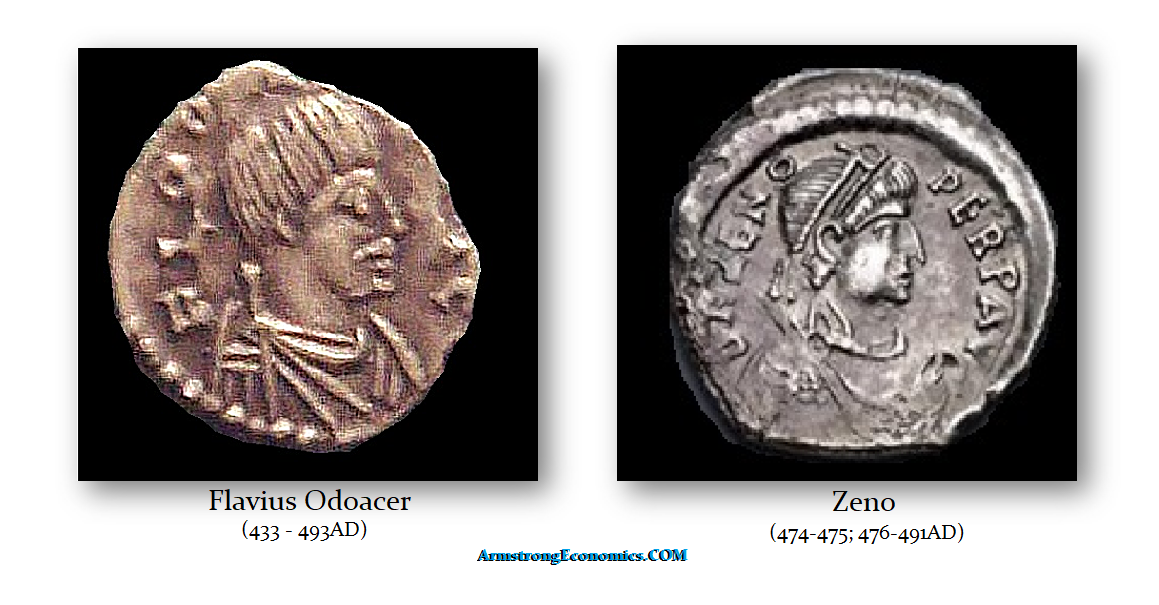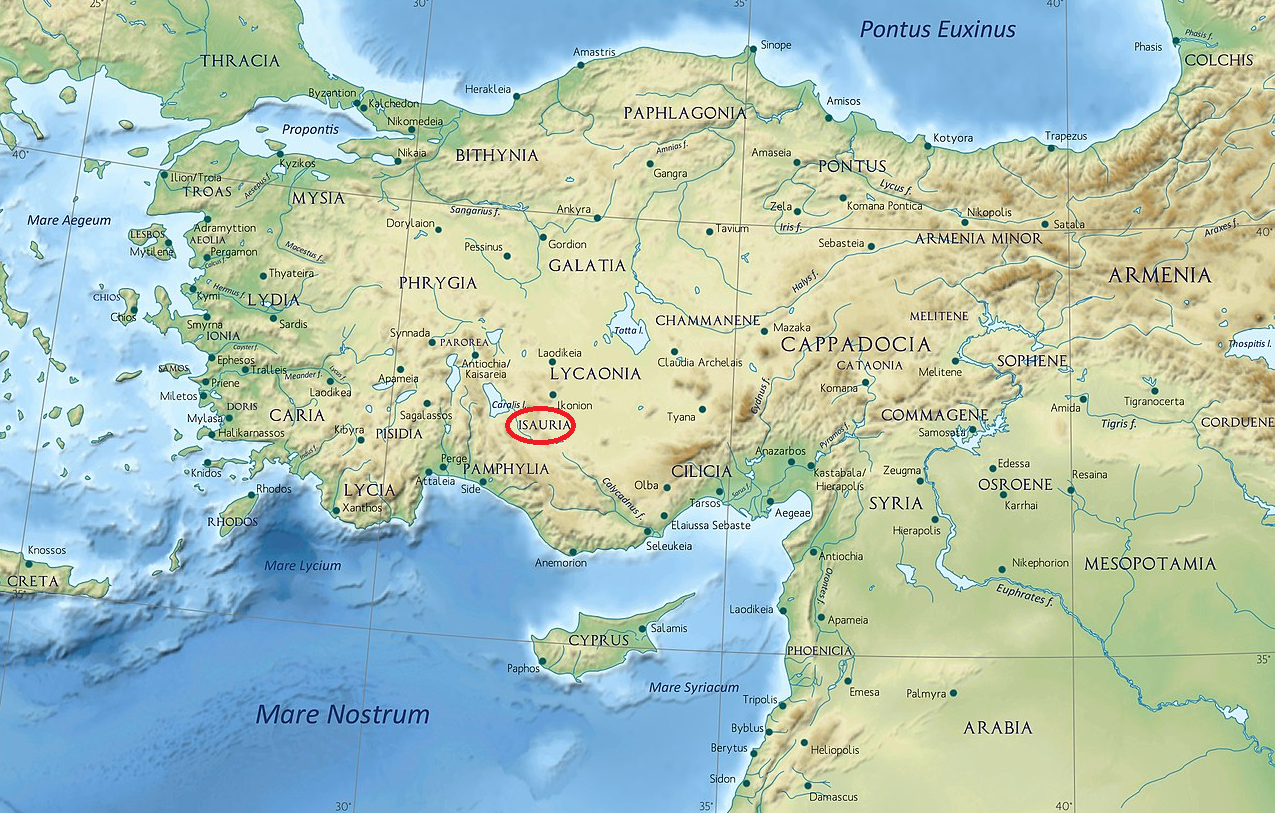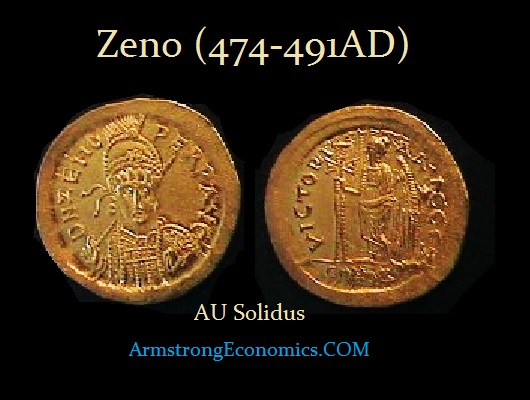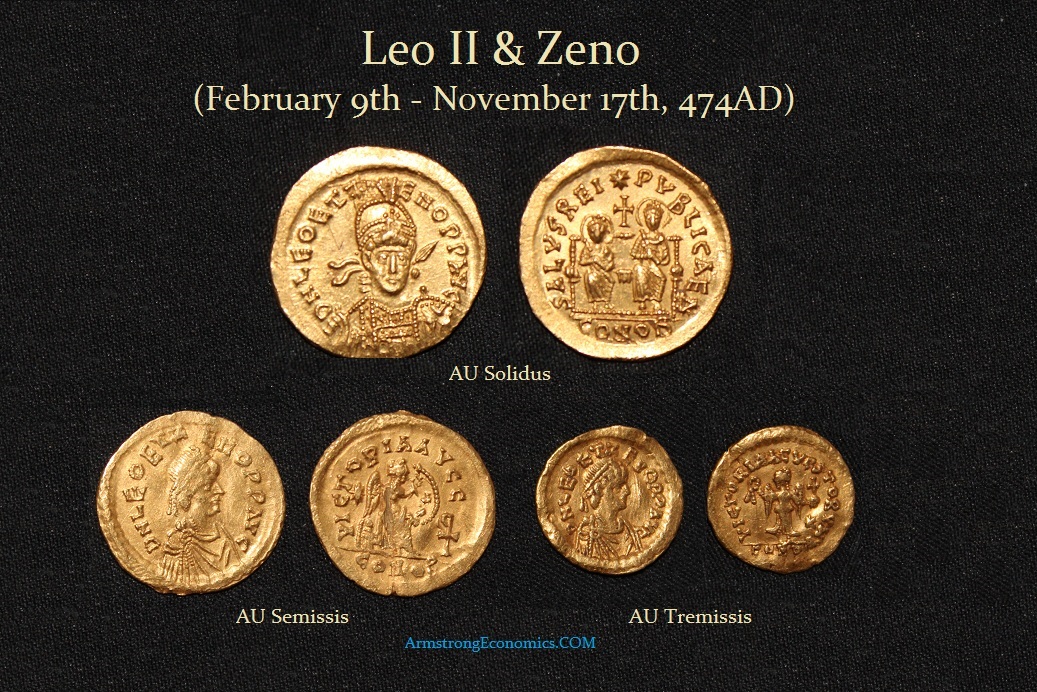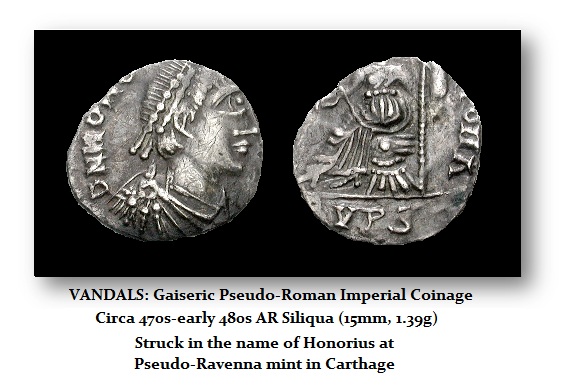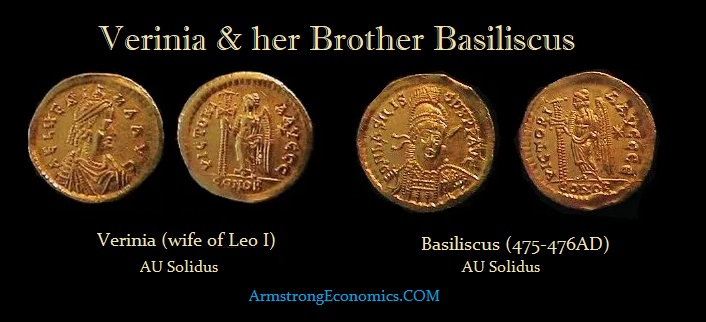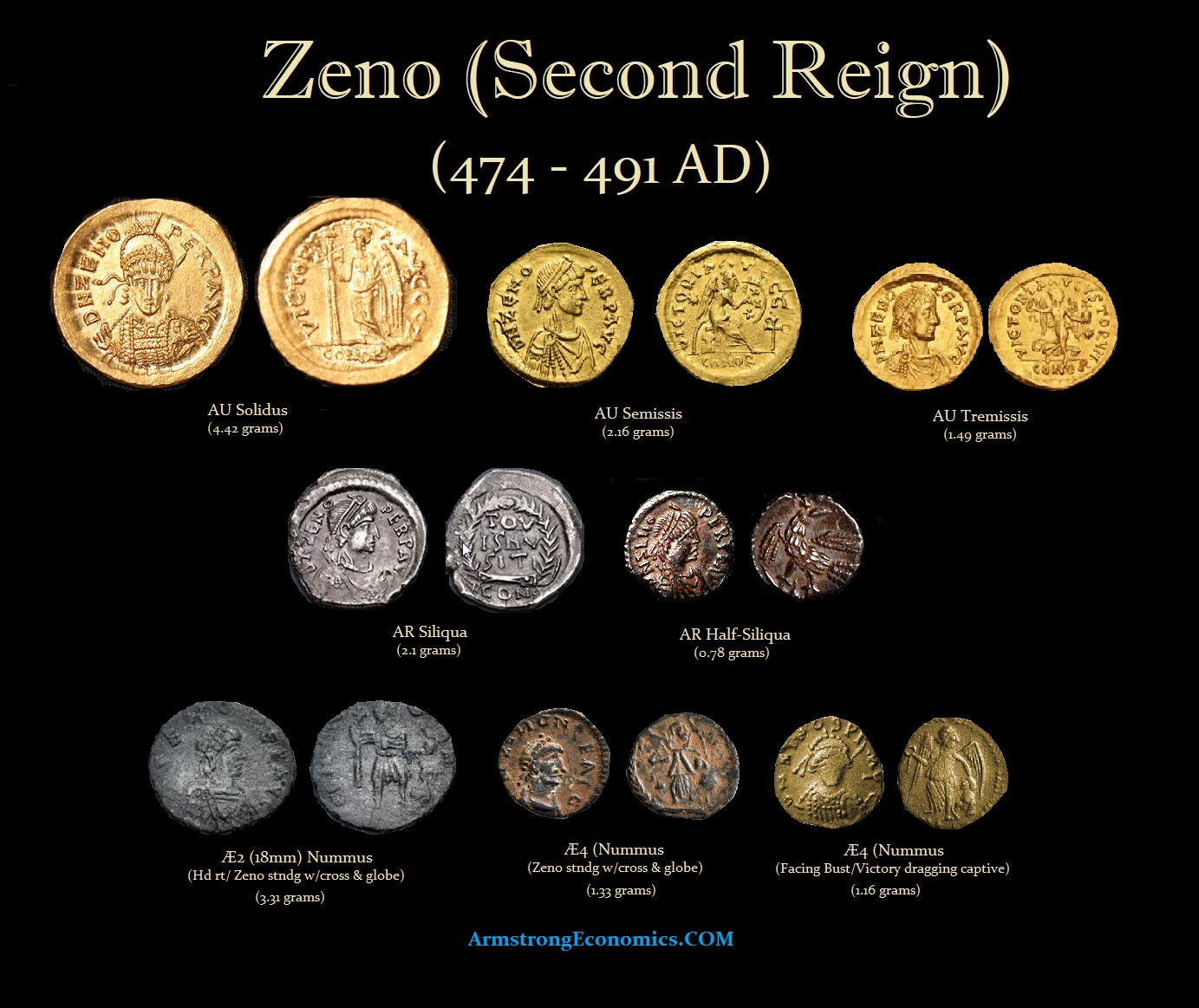Zeno (474-491AD)
Zeno (c. 425 – 491) became an Eastern Roman emperor from 474 to 475AD, and his second reign was from 476 to 491AD. His reign was eventful and important. When Rome fell in the West, Odoacer (433-493AD), who had deposed the last Western Emperor, Romulus Augustus (475-476AD), sent the imperial regalia to Constantinople. In doing so, Odoacer expressly acknowledged Zeno’s authority over the West. The imperial government had no choice but to face the fact that Rome had fallen. Hence, the new master of Italy was appointed Magister Militum per Italiam and received the administration of the Italic peninsula as viceroy of Emperor Zeno, who thus became the theoretical ruler of a reunified Roman Empire.
Zeno was an Isaurian Chieftain (c. 425 – 491), originally named Tarasicodissa. Isauria was in the mountains and isolated in southern modern Turkey. Isauria was an isolated district in Asia Minor (modern-day Turkey). The Isaurians were brought partially under control (76–75 BC) by the Romans. The historian Cassius Dio tells us that the Isaurians were plundering through the province of Asia until they faced open war and were defeated in 6AD.
Zeno was an Isaurian officer who defended Constantinople. He took the Greek name Zeno when he married the Emperor Leo I’s eldest daughter Ariadne in 466AD. Many believed he chose Zeno, who many considered a barbarian, to counter the German barbarians who had infiltrated the Empire. Leo I may have had a political balancing effect in mind. based upon contemporary sources, Zeno in 464AD warned the emperor of a plot by the son of the Magister Militum to assist the Sassanid King of Persia to invade Roman territory, promising to support the invasion. Zeno was appointed as a reward for his loyalty domesticorum, an office of great influence and prestige.
Zeno and Ariadne had a son Leo II who took the throne in 474AD who raised his father to the throne as co-emperor. Upon the death of Leo II, Zeno ruled alone, but he was very unpopular because of his origin. To a large extent, this led to frequent revolts and usurpations. He is said to have been an epileptic and died during such an occurrence. His reign saw the end of the Western Roman Empire under Romulus Augustus, but he contributed much to stabilizing the Eastern Empire.
Domestic revolts and religious dissension plagued Zeno’s reign. Still, he managed to succeed in the arena of international diplomacy. Domestically, he was associated with the Henotikon or “instrument of union”, promulgated by him and signed by all the Eastern bishops. This was intended to solve the monophysite controversy, which was the argument between those who insisted on the “one physis” formula were referred to as Monophysites (the divine & human nature), while those who accepted the “two natures” definition were called Dyophysites. The Henotikon was widely unpopular and eventually abandoned under Justin I (518 – 527AD)
The first coins to be struck for Leo II, were minted in the name of “Leo and Zeno perpetual Augusti”, which date between February 9th and the 17th of November 474AD. On January 18th, 474AD, Leo I died. However, Leo II had not already been proclaimed co-emperor by his grandfather. Since Leo II was only seven years old, which was too young to rule by himself, Ariadne and her mother Verina prevailed upon him to crown Zeno, his father, as co-emperor, which he did on February 9th, 474AD. When Leo II became ill and died, Zeno became sole emperor.
Zeno had to come to terms with the Vandals of King Genseric, who had threatened the sea commercial routes. Zeno stipulated an “eternal” peace treaty between the Vandals and the Eastern Roman Empire, allowing the Romans to pay ransoms for the prisoners in Vandal hands and ending the Vandal persecution of Orthodox Christians in the Vandal territory.
Despite this success, Zeno remained unpopular because of his barbarian origins. The Senate did not respect him, so he relied upon the Isaurian component of the army to strengthen his bond with the Isaurian generals. Many saw his right to the throne based entirely on his marriage – not blood. His mother-in-law Verina decided to overthrow Zeno and replace him with her lover, the ex-Magister Officiorum Patricius. Her brother Basiliscus joined the conspiracy, and they created civil unrest in the city to foster the image that the people did not want an Isaurian emperor. Basiliscus managed to get even the Ostrogothic general Theodoric Strabo to join the conspiracy.
Basiliscus then staged the usurpation against Zeno on January 9th, 475 AD. Basiliscus seized power in the interim and put to death Verina’s lover. Zeno was forced to flee Constantinople to Isauria with his wife and mother, some Isaurian supporters taking with them the Imperial treasure. Basiliscus sought to chase him in hopes of executing him to secure their power. Zeno was compelled to shut himself up in a fortress, where they besieged him. They did capture Zeno’s brother Longinus, holding him as a hostage.
Basiliscus initiated ethnic cleansing, inspiring the mob to kill all of the Isaurians left in Constantinople. Because Zeno took the treasury with him, Basiliscus was forced to impose heavy taxes, instantly making him unpopular. On top of that, he supported Monophysites, which also turned the Church against him. The people of Constantinople began to blame him for a great fire that had also burned several parts of the city.
The Senate began to secretly support Zeno, but he was also bribing senators who followed the money. The generals of Basiliscus switched sides, and this gave Zeno a united army to march on Constantinople. Basiliscus attempted to regain popular support and managed to muster a small army to confront Zeno under his nephew Armatus’ command. Zeno, it was said, also bribed Armatus promising to confirm his rank of Magister Militum Praesentalis for life and promoting his son to the rank of caesar. Thus, Armatus’ army failed to intercept Zeno’s forces.
In August 476, Zeno besieged Constantinople. The Senate opened the city’s gates to the Zeno, and thus, his second reign on the throne began. Basiliscus fled with his family to the baptistery of Hagia Sophia. Betrayed by the Patriarch, Basiliscus surrendered himself, his wife Zenonis, and his family after extracting a solemn promise from Zeno not to shed their blood. Basiliscus and his family were sent to a fortress in Cappadocia, where Zeno had them enclosed in a dry cistern to die from exposure. Zeno kept his word to Armatus and even appointed his son, also named Basiliscus, to the rank of Caesar.
Monetary System
Mints: Milan; Rome; Ravenna; Thessalonica; Constantinople; Antioch
Obverse Legends:
D N ZENO PERP AVG
D N ZENO PF AVG
DENOMINATIONS
AU Solidus (4.50 grams)
AU Semissis (2.25 grams)
AU Tremissis (1.45 grams)
AR Miliarense (4.50 grams)
AR Siliqua (3.25 grams)
AR ½ Siliqua (1.12 grams)
AE1
AE2 Head right (3.31 grams)
AE4 Head right (Numus) (1.3 grams)
AE4 Facing Portrait (Numus) (1.3 grams)

